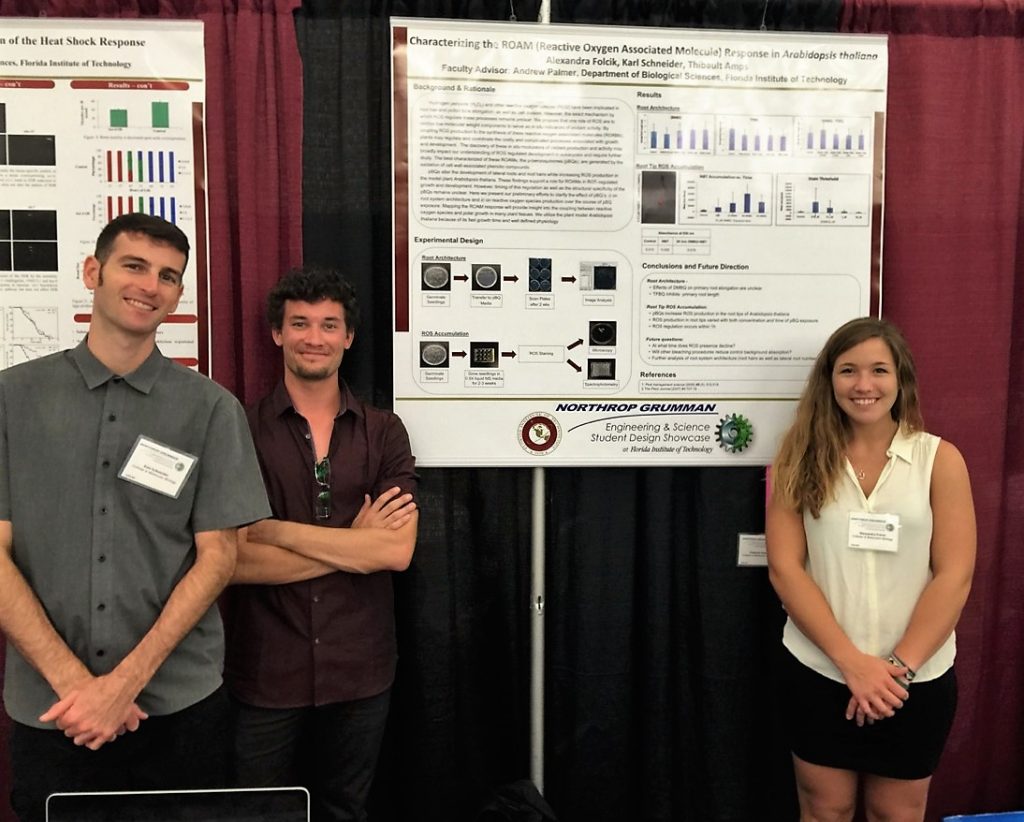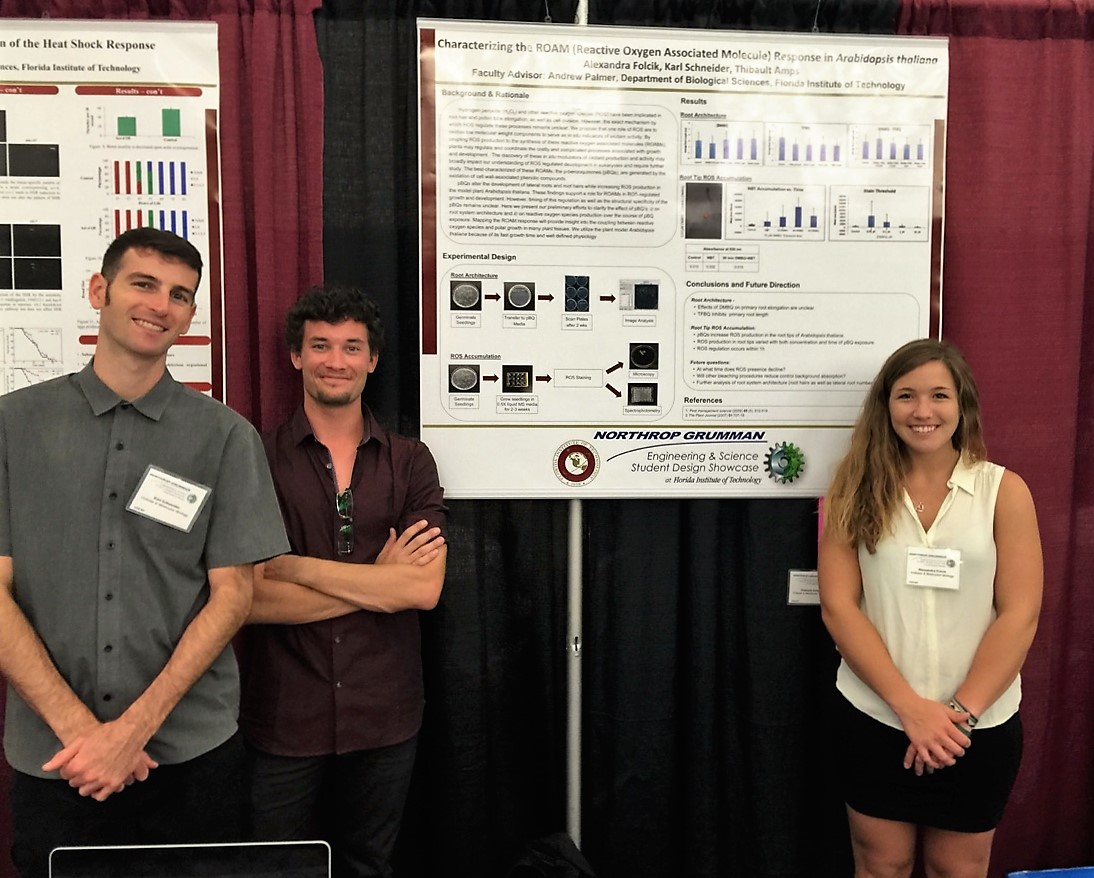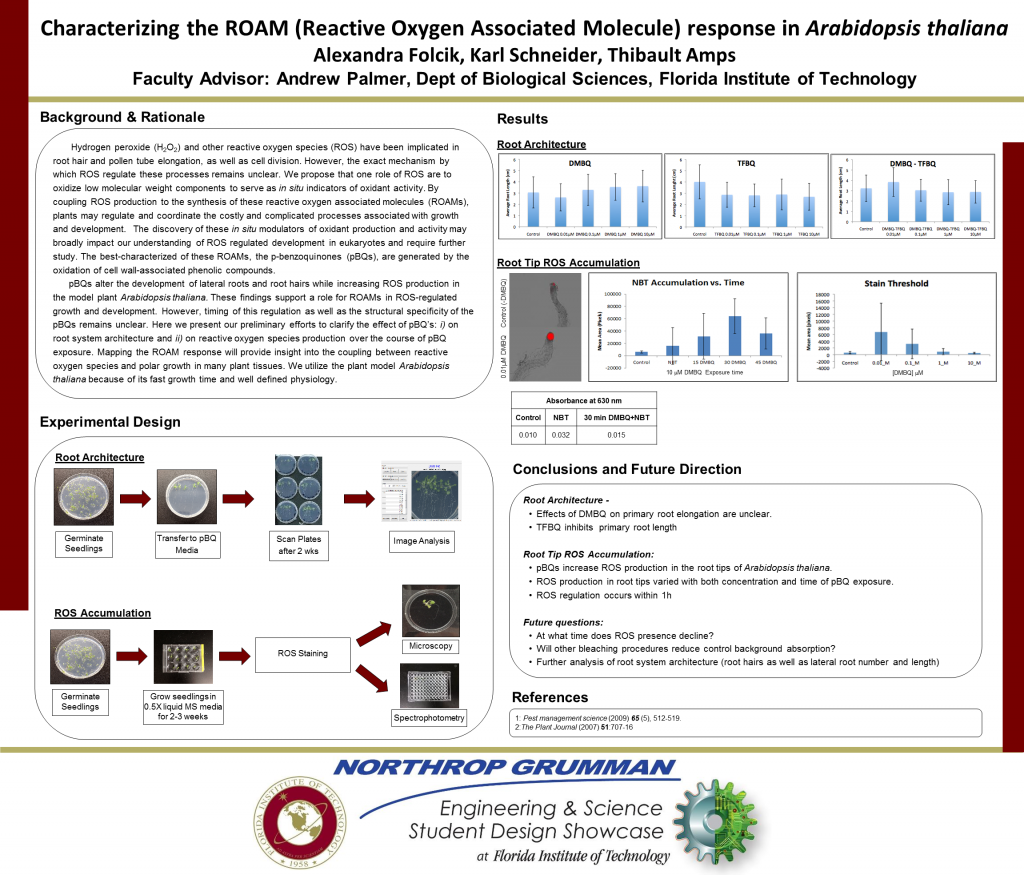Biology at an Engineering Showcase
The thing they don’t tell you: there’s even biology at the student design showcase.
Friday, April 8 was the annual Northrop Grumman Engineering and Science Student Design Showcase (say that five times fast). Usually, the showcase is attributed to engineering students who are showing off their senior design projects that they are required by major to do. However, what most people don’t realize is that other majors are encouraged to present as well.

Being that the biology program at Florida Tech is so research intensive, many college of science students have their own projects they are able to present – including me.
Since I started at Florida Tech in 2013, I have been involved in a variety of different research projects. This is one of the perks of going for your undergrad at a small university. Currently, I work in Dr. Palmer’s Plant Biochemistry lab which, if you’ve read some of my other articles, you probably already know. While I started in the lab working on DNA barcoding of pollen, I now have moved on to an even cooler project. A project which I was able to present at the showcase.
What my partners and myself are researching is a newly discovered chemical signalling pathway in plants regulated by something called reactive oxygen species. ROS are molecules containing an oxygen with an unpaired valence electron. This unpaired electron is very short lived and reactive. In all biological systems, ROS are made for different purposes including defense and signalling. In plants, these ROS have been found to play a role in growth as well.

In the lab, we use a plant called Arabidopsis thaliana because it grows fast and we know a lot about it, including its genes. This plant is sort of like the plant version of a lab rat. We think, that these ROS react with certain compounds in the plant’s cell wall to produce reactive oxygen associated molecules. These ROAMs then can travel as signal molecules throughout the plant. One of the best known types of ROAMs are molecules called p-benzoquinones or pBQs.
What we looked at in our preliminary work was the effect of these reactive oxygen species on the plant’s root architecture, as well as trying to clarify reactive oxygen species production over the course of pBQ exposure. These studies will eventually lead us to work on how the pathway itself functions in plants. By learning this information, the knowledge of this pathway has applications in agriculture as well as in other eukaryotic systems.
I won’t bore you with any more details but just remember, biology is cool! If you’re more interested in learning more about this project or other projects at the showcase, you can check out the showcase website here. I will also share my groups preliminary poster below.
Biology this year was about 20% of the design showcase and it continues to grow every year. Who knows, maybe eventually we’ll be at equal strength. I doubt it, but there’s always hope!






